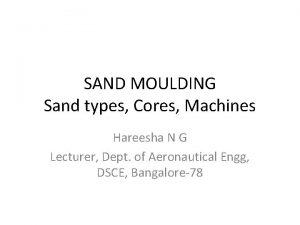A Numerical Modeling Approach of Composite Riser Hoses

- Slides: 1

A Numerical Modeling Approach of Composite Riser Hoses Amaechi Chiemela Victor rd 3 Year Ph. D Student – Engineering Department Supervisor: Prof. Jianqiao Ye Email: c. amaechi@Lancaster. ac. uk Hydrodynamic strength analysis on Riser Hose Introduction Composite material - a matrix and a reinforcement combination, which when combined gives properties superior to the properties of the individual components. Risers are conduits to transfer materials from seafloor to production / drilling facilities atop the water's surface, & from facility to the seafloor. The advantages of composite materials can be harnessed in the development of risers in deepwaters-Composite Risers. Composite materials - have good corrosion resistance, light weight, etc. Loads on a Composite Riser Mean Water level Hydrostatic stiffness, Added mass and Damping matrices Wave forces Current forces Vess Top el Connection Weight, (Wr) of Composite riser Riser towers Toptensioned Bottom Risers Y X Flexible Risers Internal and external fluid pressure Buoyancy Z Drilling Risers connection Foundation casing Application of Composite Riser Systems Steel Catenary Risers Composite Risers Pull tube Risers Boundary Conditions Conclusion Composite riser behave differently from Steel Risers, they were first deployed in deepwaters in 2002, and there are some challenges, e. g. lack of standards on Composite Risers. Composite materials offer a range of benefits that could improve riser technology. As regards the research, it is still on-going. @ FST Christmas Poster Conference ,

